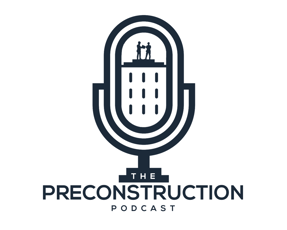The History of the Digitization of Preconstruction
Preconstruction has come a long way since its early days as napkin-sketching and manual number-crunching. In just a few years, tasks that once took days have been whittled down to just a few hours thanks to the advent of new technologies like automated 2D and 3D takeoff, as well as comparison reporting and team estimating.
Today we have dozens of articles and thought pieces reflecting on the impact that technology has had on our industry and the impact that it will continue to make as we move into the future. In fact, we’ve written several of them! But although it’s important to know where we’re going next, it’s just as important to understand where we came from. What was preconstruction like before innovations began emerging on the scene? To understand that, we have to go back to the beginning.
Disconnected and Disjointed
 Disconnected precon teams not only lead to frustration but serious errors too.
Disconnected precon teams not only lead to frustration but serious errors too.
The majority of preconstruction tasks that can be executed with just a few clicks of a mouse today used to require hundreds of papers stored in a dozen different places, constant calls to get bids in from subcontractors, check-ins with architects and engineers to resolve design issues, and meetings with project owners to keep them updated on a seemingly endless amount of changes. 2D takeoffs couldn’t be accomplished within a single computer program. Instead, they had to be sketched out on whatever piece of paper was available. As a result, it was difficult to track data and understand what happened to it throughout a project’s lifecycle.
Then, in the 90s, Excel became available to the general public and was quickly incorporated into the world of preconstruction. Excel did help streamline a lot of the estimating process, thanks to the ability to create complex formulas, in addition to setting the foundation for a somewhat central database. Shortly thereafter, programs for automating 2D takeoff also entered the market. The only problem? Neither of these programs were able to “speak” to each other, so much of the estimating process still remained lengthy, arduous, and extremely siloed, making future collaboration and innovation that much harder.
The Push for Data Tracking and Connectivity
In the mid-2000s, as estimating tasks continued to be increasingly digitalized, the focus shifted toward not just generating data more quickly but tracking it and leveraging it. Construction estimating software that could allow every task—comparison reporting, team estimating, 2D and 3D takeoff—to be performed all in one program emerged as the latest and greatest innovation in the world of preconstruction.
 Being able to track and analyze data instead of just generating it leads to faster, more accurate predictions.
Being able to track and analyze data instead of just generating it leads to faster, more accurate predictions.
On top of this, general contractors were beginning to see the value of construction estimating technology. Not only did improved advancements in preconstruction cut back on time and save money, but it also enabled preconstruction teams to pursue activities they might not have had the capability to before, such as creating estimate templates for future projects and building out data visualization dashboards through Microsoft’s PowerBI. Instead of just churning out numbers, preconstruction teams could now track the journey of each individual piece of data and gain greater insight into how and why it changed through each stage of a project.
All of these improvements in preconstruction technology have also led to a more interconnected industry as a whole. Now that many of the silos that cut preconstruction off from other departments have been removed, its true value has become much more apparent. Preconstruction isn’t just an annoying, tedious phase to slog through anymore: it’s a critical component of a project’s success, and it is also capable of generating profit too.
Moving Forward
Now that you know a little more about the trails that were blazed to get to where we are today, you might be wondering, "So what's next?" We're excited to say that we can point you to the next exciting chapter in construction software. If you're interested in reducing headaches and stress, come check out our latest tool, DESTINI Bid Day by clicking here.

-1.png?width=112&height=112&name=image%20(4)-1.png)













.jpg?width=310&height=230&name=precon%20geeks%20picture%20(Twitter%20Post).jpg)
